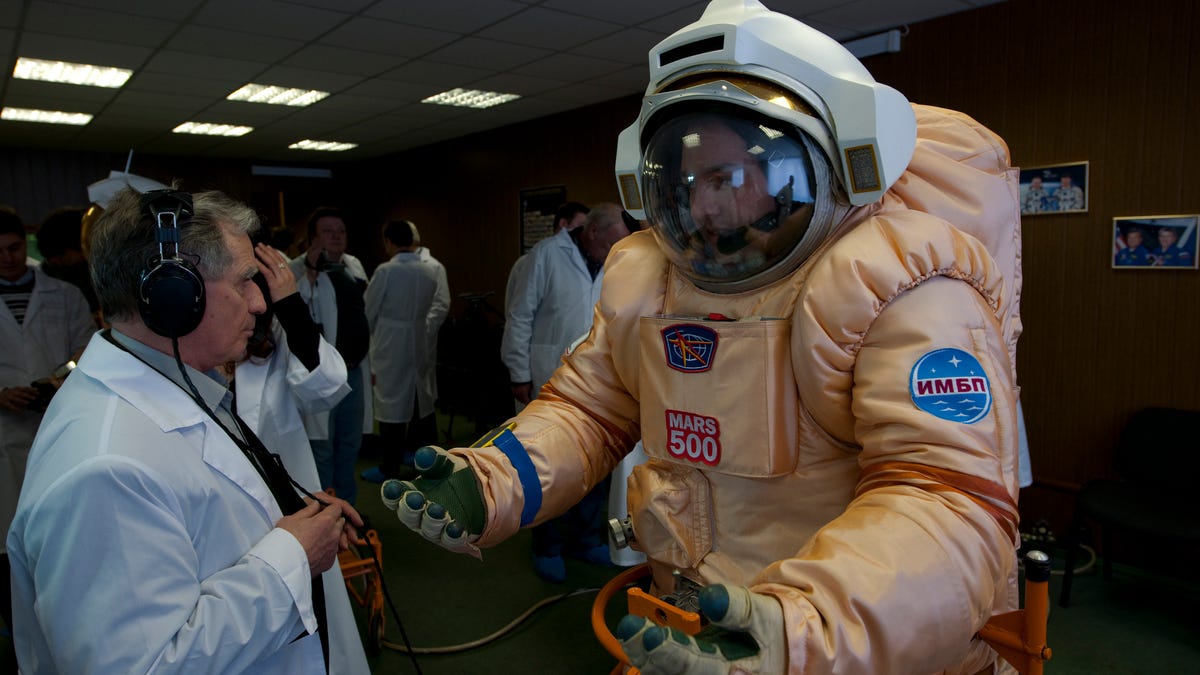Mars500 project gears up for the long haul
This summer, European Space Agency will lock six "crew members" in close quarters to role-play as if actually en route to the Red Planet. For 520 days.
Psyched for a long, long trip to Mars but can't stand the wait for someone to actually mount such a mission? The next best thing might well be to lock yourself in an isolation chamber in Moscow.
The European Space Agency is gearing up for exactly that. As part of its Mars500 project, the ESA will be conducting a 520-day earthbound sojourn at Russia's Institute of Biomedical Problems starting this summer. At that time, the six participants in the simulated mission will sequester themselves in a mock interplanetary spaceship, with complementary mock Martian lander.
The endurance exercise, originally intended to start in late 2009, is intended to mimic the constraints of an actual manned mission to Mars, which is likely to remain on the drawing board for many years to come. The Mars500 "crew members" will be hermetically sealed into their facilities and for the duration will have only the limited supplies that they were able to fit inside, including food similar to that consumed on the International Space Station. Communications with nearby researchers, to be done only via the Internet, will be on a 20-minute delay each way.
On Tuesday, at its Technology Centre ESTEC in the Netherlands, the ESA introduced the four candidates for the two European spots in the Mars500 crew, who have been training for the mission for about a month. The two eventual finalists will be sharing their close quarters with three participants from Russia (as distinct from the rest of Europe) and one from China.
The European candidates are required to be in good health, speak both English and Russian, and have work experience in fields such as medicine, biology, or computer engineering. Given the space constraints, they cannot be taller than 185 centimeters, or just a hair or two over 6 feet.
The Moscow-as-Mars mission will be broken into three phases: 250 days designated as the outbound trip to the Red Planet, 30 days as the "surface operations," and 240 days as the return voyage. During the surface phase, three participants will stay in the pseudo-spaceship and three will inhabit the Martian surface simulator.
Throughout the roughly 17-month exercise, the crew will spend a good deal of time monitoring themselves--their physical and psychological well-being--as well as conducting scientific experiments and maintaining their living quarters.
The sextet won't be the first inhabitants of the spaceship simulacrum. Last summer, the ESA wrapped up a 105-day exercise that covered much of the same research ground in one-fifth the time. And if they accomplished nothing else, that group at least managed to grow plenty of strawberries, radishes, and cabbage, amid a good share of kumbaya time.
"We had an outstanding team spirit throughout the entire 105 days," said Cyrille Fournier, one of the 105-day astronaut role players, in a typically upbeat ESA press release in July. "Living for that long in a confined environment can only work if the crew is really getting along with each other."


